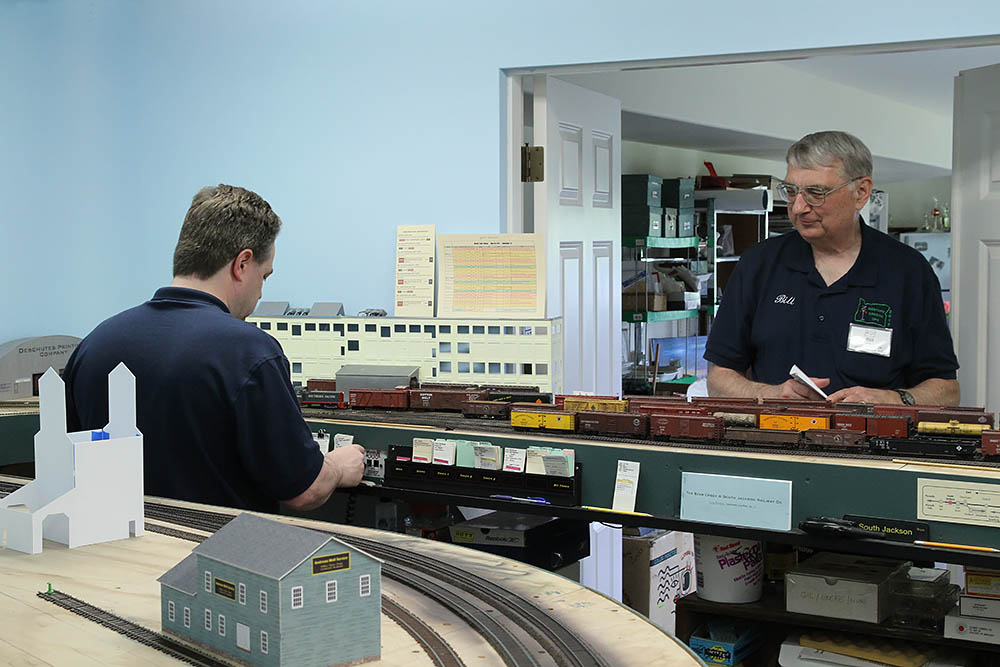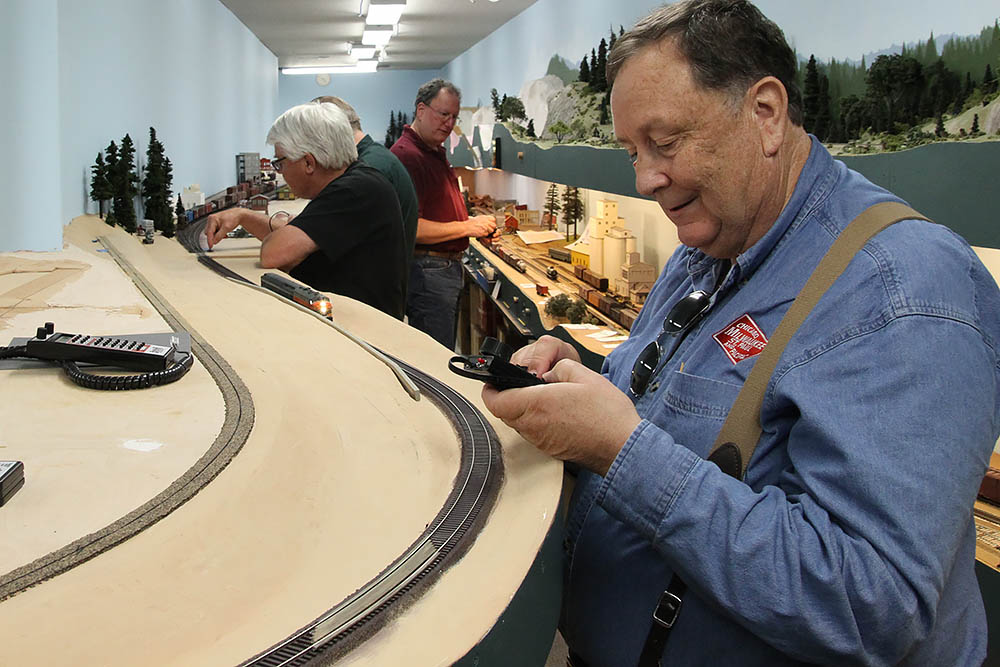horacefithers
New member
I'm working on cleaning up the BC&SJ (the 100 miles I have so far). Currently I'm cleaning up scenery, finishing towns, and adding signals.
Soon I'll be trying to set up some session stuff. I've found some documentation on sessions in the Trainz Wiki but it looks like a vertical cliff to digest it all and do something useful. Are there any good tutorials out there that make session building more approachable?
For example, what is a Track Mark and how does one place them (or are the automatically placed)?
Should signals be under the route layer or the session layer.
I've tried installing signals on the following (crude ascii art) double track location. They behave in one direction, but are red all the time in the other. All turnouts are lined for the main tracks (crossovers not taken):
(S) indicates a two head signal. (A) approach signal two heads.
-----------A------------S--T---------T--S----------------A-------- current of traffic --->
\ /
\ /
-----------A------------S-----T---T-----S----------------A-------- <-- current of traffic
I apologize if this is a screwy signal installation as I know little about signalling. I've always made a point of running a "dark" model railroad - no signals, feeling that it puts more "skin in the game" for the operators. My current HO scale layout uses Time Table & Train Order operation where the only signals are Train Order Signals at the open stations. Previously I used Track Warrants.
Is such a signal configuration beyond what Trainz can handle automatically? The signals seem to work when running left to right (on the upper track).
Prototype would be Espee in the '50s / '60s. I'd love to find some lower quadrant Espee semaphores but am not holding my breath.
Enquiring minds want to know,
Horace Fithers
Soon I'll be trying to set up some session stuff. I've found some documentation on sessions in the Trainz Wiki but it looks like a vertical cliff to digest it all and do something useful. Are there any good tutorials out there that make session building more approachable?
For example, what is a Track Mark and how does one place them (or are the automatically placed)?
Should signals be under the route layer or the session layer.
I've tried installing signals on the following (crude ascii art) double track location. They behave in one direction, but are red all the time in the other. All turnouts are lined for the main tracks (crossovers not taken):
(S) indicates a two head signal. (A) approach signal two heads.
-----------A------------S--T---------T--S----------------A-------- current of traffic --->
\ /
\ /
-----------A------------S-----T---T-----S----------------A-------- <-- current of traffic
I apologize if this is a screwy signal installation as I know little about signalling. I've always made a point of running a "dark" model railroad - no signals, feeling that it puts more "skin in the game" for the operators. My current HO scale layout uses Time Table & Train Order operation where the only signals are Train Order Signals at the open stations. Previously I used Track Warrants.
Is such a signal configuration beyond what Trainz can handle automatically? The signals seem to work when running left to right (on the upper track).
Prototype would be Espee in the '50s / '60s. I'd love to find some lower quadrant Espee semaphores but am not holding my breath.
Enquiring minds want to know,
Horace Fithers


